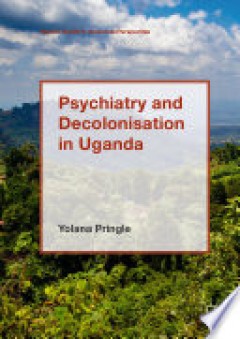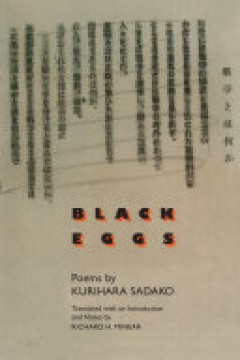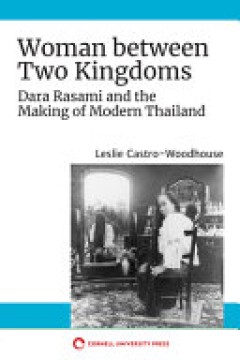Filter by

Australia’s Fertility Transition : A study of 19th-century Tasmania
In the late 19th and early 20th centuries, most countries in Europe and English-speaking countries outside Europe experienced a fertility transition, where fertility fell from high levels to relatively low levels. England and the other English-speaking countries experienced this from the 1870s, while fertility in Australia began to fall in the 1880s. This book investigates the fertility tran…
- Edition
- 13
- ISBN/ISSN
- 9781760463373
- Collation
- 318
- Series Title
- -
- Call Number
- 304.6309946.MOY

Psychiatry and decolonisation in Uganda
This open access book investigates psychiatry in Uganda during the years of decolonisation. It examines the challenges facing a new generation of psychiatrists as they took over responsibility for psychiatry at the end of empire, and explores the ways psychiatric practices were tied to shifting political and development priorities, periods of instability, and a broader context of transnational …
- Edition
- 1
- ISBN/ISSN
- 9781137600950
- Collation
- XII, 259p, ; ill.
- Series Title
- Mental health in historical perspective
- Call Number
- 616.890096761 PRI p

Japan at War and Peace : Shidehara Kijūrō and the Making of Modern Diplomacy
The question of how to maintain the continuity of diplomacy while developing democracy without military intervention is an old and new issue. The challenge can be described as a dilemma between democracy and diplomatic coherence. This dilemma is not unique to the twenty-first century; it has been a constant challenge to the development of democracy. In non-Western countries, democratisation ori…
- Edition
- 11
- ISBN/ISSN
- 9781760464974
- Collation
- -
- Series Title
- -
- Call Number
- 952.044092.HAT

The Invasion of The South: Army Air Force Operations, and the Invasion of Nor…
Between 1966 and 1980, the War History Office of the National Defense College of Japan (now the Center for Military History of the National Institute for Defense Studies) published the 102-volume Senshi Sōsho (War History Series). The present book completes the trilogy of English translations of the sections in the Senshi Sōsho series on the Japanese operations against the former Dutch East I…
- Edition
- 34
- ISBN/ISSN
- 9789400604100
- Collation
- 519p
- Series Title
- -
- Call Number
- 940.544952 REM

The power of economic ideas: the origins of Keynesian macroeconomic managemen…
Economics, Keynes once wrote, can be a ‘very dangerous science’. Sometimes, though, it can be moulded to further the common good though it might need a leap in mental outlook, a whole new zeitgeist to be able do do. This book is about a transformation in Australian economists’ thought and ideas during the interwar period. It focuses upon the interplay between economic ideas, players and p…
- Edition
- -
- ISBN/ISSN
- 9781921666278
- Collation
- 326 p
- Series Title
- -
- Call Number
- 994.042 MIL t

Black eggs : poems
Kurihara Sadako was born in Hiroshima in 1913, and she was there on August 6, 1945. Already a poet before she experienced the atomic bombing of Hiroshima, she used her poetic talents to describe the blast and its aftermath. In 1946, despite the censorship of the American Occupation, she published Kuroi tamago (Black Eggs), poems from before, during, and immediately after the war. This volume in…
- Edition
- -
- ISBN/ISSN
- 9780472127634
- Collation
- xx + 330 p
- Series Title
- -
- Call Number
- 895.615 SAD b

Land of necessity : consumer culture in the United States-Mexico borderlands
Published in cooperation with the William P. Clements Center for Southwest Studies, Southern Methodist University. In Land of Necessity, historians and anthropologists unravel the interplay of the national and transnational and of scarcity and abundance in the region split by the 1,969-mile boundary line dividing Mexico and the United States. This richly illustrated volume, with more than 100 i…
- Edition
- -
- ISBN/ISSN
- 9780822390787
- Collation
- xv, 401 p
- Series Title
- -
- Call Number
- 306.309721 MCC

Mongol Court Dress, Identity Formation, and Global Exchange
The Mongol period (1206-1368) marked a major turning point of exchange – culturally, politically, and artistically – across Eurasia. The wide-ranging international exchange that occurred during the Mongol period is most apparent visually through the inclusion of Mongol motifs in textile, paintings, ceramics, and metalwork, among other media. Eiren Shea investigates how a group of newly-conf…
- Edition
- -
- ISBN/ISSN
- 9781032238432
- Collation
- xvii,207 p
- Series Title
- -
- Call Number
- 391.00951 HEA M

The territory of Japan : its history and legal basis
This Open Access book carefully examines the legal and historical bases of the territory of Japan as a modern State from the Meiji period to 2002. A new preface summarizes key developments in the situation up through 2022. Japan’s current territory is stipulated by the Potsdam Declaration (1945) and the Treaty of Peace with Japan (1951); it includes the Northern Territories, the Senkaku Is…
- Edition
- 2
- ISBN/ISSN
- 9789819930135
- Collation
- xxi, 185p.; ill.
- Series Title
- -
- Call Number
- 341.420952 THE k

Woman between two kingdoms : Dara Rasami and the making of modern Thailand
"Woman Between Two Kingdoms explores the story of Dara Rasami, one of 153 wives of King Chulalongkorn of Siam in Thailand during the late nineteenth and early twentieth centuries. Born in a kingdom near Siam called Lan Na, Dara served as both hostage and diplomat for her family and nation. Thought of as a ""harem"" by the West, Siam's Inner Palace actually formed a nexus between the domestic an…
- Edition
- -
- ISBN/ISSN
- 9781501755507
- Collation
- xii + 180 p
- Series Title
- -
- Call Number
- 305.309593 CAS w
 Computer Science, Information & General Works
Computer Science, Information & General Works  Philosophy & Psychology
Philosophy & Psychology  Religion
Religion  Social Sciences
Social Sciences  Language
Language  Pure Science
Pure Science  Applied Sciences
Applied Sciences  Art & Recreation
Art & Recreation  Literature
Literature  History & Geography
History & Geography